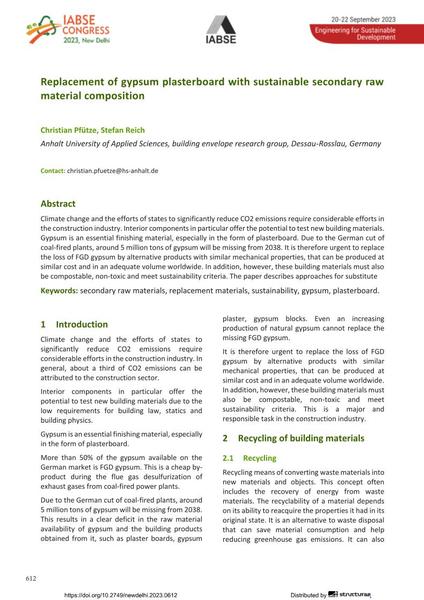Replacement of gypsum plasterboard with sustainable secondary raw material composition

|
|
|||||||||||
Bibliographic Details
| Author(s): |
Christian Pfütze
(Anhalt University of Applied Sciences, building envelope research group, Dessau-Rosslau, Germany)
Stefan Reich (Anhalt University of Applied Sciences, building envelope research group, Dessau-Rosslau, Germany) |
||||
|---|---|---|---|---|---|
| Medium: | conference paper | ||||
| Language(s): | English | ||||
| Conference: | IABSE Congress: Engineering for Sustainable Development, New Delhi, India, 20-22 September 2023 | ||||
| Published in: | IABSE Congress New Delhi 2023 | ||||
|
|||||
| Page(s): | 612-619 | ||||
| Total no. of pages: | 8 | ||||
| DOI: | 10.2749/newdelhi.2023.0612 | ||||
| Abstract: |
Climate change and the efforts of states to significantly reduce CO2 emissions require considerable efforts in the construction industry. Interior components in particular offer the potential to test new building materials. Gypsum is an essential finishing material, especially in the form of plasterboard. Due to the German cut of coal-fired plants, around 5 million tons of gypsum will be missing from 2038. It is therefore urgent to replace the loss of FGD gypsum by alternative products with similar mechanical properties, that can be produced at similar cost and in an adequate volume worldwide. In addition, however, these building materials must also be compostable, non-toxic and meet sustainability criteria. The paper describes approaches for substitute |
||||
| Keywords: |
sustainability gypsum secondary raw materials replacement materials plasterboard
|
||||
